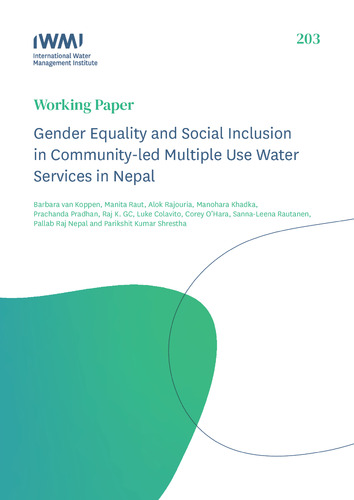Gender equality and social inclusion in community-led multiple use water services in Nepal
Abstract
The Constitution of Nepal 2015 enshrines everyone’s right of access to clean water for drinking and the right to food. The common operationalization of the right to water for drinking is providing access to infrastructure that brings water for drinking and other basic domestic uses near and at homesteads. Challenges to achieving this goal in rural areas include: low functionality of water systems; expansion of informal self supply for multiple uses; widespread de facto productive uses of water systems designed for domestic uses; growing competition for finite water resources; and male elite capture in polycentric decision-making. This paper traces how the Nepali government and nongovernmental organizations in the water, sanitation and hygiene (WASH), irrigation and other sectors have joined forces since the early 2000s to address these challenges by innovating community-led multiple use water services (MUS). The present literature review of these processes complemented by field research supported by the Water for Women Fund focuses on women in vulnerable households.
Overcoming sectoral silos, these organizations support what is often seen as the sole responsibility of the WASH sector: targeting infrastructure development to bring sufficient water near and at homesteads of those left behind. Women’s priorities for using this water are respected and supported, which often includes productive uses, also at basic volumes. In line with decentralized federalism, inclusive community-led MUS planning processes build on vulnerable households’ self supply, commonly for multiple uses, and follow their priorities for local incremental infrastructure improvements. Further, community-led MUS builds on community-based arrangements for ‘sharing in’ and ‘sharing out’ the finite water resources in and under communities’ social territories. This realizes the constitutional right to food in line with the Nepal Water Resources Act, 1992, which prioritizes core minimum volumes of water for everyone’s domestic uses and many households’ irrigation. Evidence shows how the alleviation of domestic chores, women’s stronger control over food production for nutrition and income, and more sustainable infrastructure mutually reinforce each other in virtuous circles out of gendered poverty. However, the main challenge remains the inclusion of women and vulnerable households in participatory processes.

